MIXTURE CONTROL ADJUST NEW SPECIFICATIONS

REVISED MIXTURE CONTROL ADJUSTMENTS AND SPECIFICATIONS 1980-1982 COMPUTER COMMAND CONTROL QUADRAJETS (E4ME)
An update has been made in the procedure for adjusting the lean mixture screw and the idle air bleed valve on Computer Command Control quadrajet carburetors. The new procedure involves making a setting to a dimension, rather than by making a specific number of adjustment screw turns. It is possible to adjust a carburetor following overhaul, or to readjust a carburetor when a system performance check indicates this is required.
The new procedure applies to all "closed loop" quadrajets (E4ME) manufactured for use on Cadillac 6.0L V-8 and 4.1L V-6 engines. The revised specifications for the affected carburetors are included.
MIXTURE CONTROL SOLENOID PLUNGER ADJUSTMENTS
Refer to Figure 1 - Installing Mixture Control (Solenoid) Gaging Tool
1. Remove air horn, mixture control solenoid plunger, air horn gasket and plastic filler block, using normal service procedures, listed in Section 6C of the appropriate year's Service Information Manual.
2. Remove throttle side metering rod. Install mixture control solenoid gaging tool, J33815-1, BT-8253-A, or equivalent, over the throttle side metering jet rod guide. Instructions that were included in the Borroughs mixture control solenoid tool set, BT-8253-A, have been revised to include instructions on obtaining 4/32 inch total plunger travel. New instructions are being sent by Borroughs to all dealerships who have purchased the tool. Reinstall solenoid plunger.
ADJUSTING LEAN MIXTURE (SOLENOID) SCREW
Refer to Figure 2 - Adjusting Lean Mixture (Solenoid) Screw
3. Hold the solenoid plunger down, against the solenoid stop or gaging tool, and use tool J-28696-10, BT-7928, or equivalent, to turn lean mixture screw counterclockwise until the plunger breaks contact with the gaging tool. Turn slowly clockwise until the plunger just contacts the gaging tool. The adjustment is correct when the solenoid plunger contacts BOTH the SOLENOID STOP and the GAGING TOOL.
If the difference in adjustment of the lean mixture (solenoid) screw was less than 3/4 turn, the original setting had been made within specifications.
4. Remove gaging tool, and reassemble float bowl.
5. Remove lean mixture screw plug and rich mixture stop screw plug from the air horn, and reassemble carburetor.
ADJUSTING RICH MIXTURE STOP SCREW
Refer to Figure 3 - Adjusting Rich Mixture Stop Screw
6. Insert external float gage, J-9789-130, BT-7720, or equivalent, in vent hole. Use tool J-28696-10, BT-7928, or equivalent, to adjust rich mixture stop screw to obtain 4/32 inch total plunger travel.
7. Install new screw plugs, supplied in service kit.
IDLE MIXTURE ADJUSTMENTS
Refer to Figure 4 - Idle Air Bleed Valve-Check for Letter Identification
With cover removed from the idle air bleed valve, look for the presence (or absence) of an identifying letter on the top face of the valve:
If there is NO letter, begin Procedure A (below). If there IS a letter, begin Procedure B.
Procedure A (No Letter on Idle Air Bleed Valve)
Carburetor WITHOUT letter identification on the idle air bleed valve is adjusted by:
Refer to Figure 5 - Installing Idle Air Bleed Valve Gaging Tool
1. Presetting The Idle Air Bleed Valve (Only necessary if idle air bleed valve was serviced prior to on-vehicle adjustment):
a. Install idle air bleed valve gaging tool J-33815-2, BT-8253-B, or equivalent, in throttle side "D" shaped vent hole in the air horn casting. The upper end of the tool should be positioned over the open cavity next to the idle air bleed valve.
Refer to Figure 6 - Positioning Idle Air Bleed Valve
b. Hold the gaging tool down lightly, so that the solenoid plunger is against the solenoid stop, and adjust the idle air bleed valve so that the gaging tool will pivot over and just contact the top of the valve. The valve is now preset for on-vehicle adjustment.
c. Remove gaging tool.
2. Adjusting The Idle Air Bleed Valve
a. BLOCK DRIVE WHEELS. Place transmission in PARK, disconnect vacuum parking brake release, and set parking brake. Start engine and allow it to reach normal operating temperature. Connect dwell/tachometer meter.
b. While idling in DRIVE, slowly turn valve clockwise or counterclockwise, until the dwell reading varies within the 25-35 DEG range, attempting to be as close to 30 DEG as possible. The air bleed valve is very sensitive, and should only be turned 1/8 turn at a time.
c. If the dwell reading does not vary and is not within the 25-35 DEG range, it is necessary to remove the carburetor and remove the plugs using normal service procedures listed in Section 6C of the appropriate year's Service Information Manual to set the idle mixture needles (see Step 3).
3. Setting The Idle Mixture Needles (If necessary from Step 2C above)
a. Use tool J-29030-B, BT-76108, or equivalent, to turn both idle mixture needles clockwise until they are lightly seated, then turn each mixture needle counter-clockwise the number of turns specified in Figure 7.
b. Reinstall carburetor on engine, using a new flange gasket if necessary. Do not install air cleaner yet.
4. Readjusting Idle Air Bleed Valve (Only necessary if Step 3, above, was required)
a. Start engine and run until fully warm, and repeat Step 2, above.
b. If unable to set dwell to 25-35 DEG, and dwell is below 25 DEG, turn both mixture needles counterclockwise an additional turn. If dwell is above 35 DEG, turn both mixture needles clockwise an additional turn. Readjust idle air bleed valve to obtain dwell.
5. Seal the idle mixture needle openings in the throttle body, using silicone sealant (RTV). Sealing is required to discourage unnecessary adjustment of the setting, and to prevent fuel vapor loss in that area as required for emission specifications.
6. Perform idle speed adjustments if necessary.
Procedure B (Letter on Idle Air Bleed Valve)
1. Setting The Idle Air Bleed Valve
a. Install air bleed valve gaging tool, J-33815-2, BT-8253-B, or equivalent, in throttle side "D" shaped vent hole in the air horn casting. The upper end of the tool should be positioned over the open cavity next to the idle air bleed valve (Figure 5).
b. Hold the gaging tool down lightly, so that the solenoid plunger is against the solenoid stop, and adjust the idle air bleed valve so that the gaging tool will pivot over and just contact the top of the valve (Figure 6). The valve is now set properly.
c. Remove gaging tool.
2. Adjusting The Idle Mixture Needles
a. Remove carburetor, then remove the idle mixture needle plugs using normal service procedures listed in Section 6C of the appropriate year's Service Information Manual.
b. Use tool J-29030-B, BT-7610-B, or equivalent, to turn each idle mixture needle clockwise until lightly seated, then turn each mixture needle counterclockwise three turns.
c. Reinstall carburetor on engine, using a new flange gasket if necessary. Do not install air cleaner yet.
d. BLOCK DRIVE WHEELS. Place transmission in PARK, disconnect vacuum parking brake release, and set the parking brake. Start engine and allow it to reach normal operating temperature. Connect dwell/tachometer meter.
e. While idling in DRIVE, adjust both mixture needles equally, 1/8 turn at a time, until dwell reading varies within the 25-35 DEG range, attempting to be as close to 30 DEG as possible. If reading is too low, turn mixture needles counterclockwise. If reading is too high, turn mixture needles clockwise. Allow time for dwell reading to stabilize after each adjustment.
3. After adjustments are complete, seal the idle mixture needle openings in the throttle body, using silicone sealant (RTV). The sealer is required to discourage unnecessary readjustments of the setting, and to prevent fuel vapor loss in that area as required for emission specifications.
4. Perform idle speed adjustments if necessary.
For warranty purposes, use labor Operation No. J5306 at 1.1 hours for rich stop, lean stop, and idle bleed valve, or J5309 at .8 hour for idle mixture adjustment. ADD: To perform CCC system performance check .5 hour.
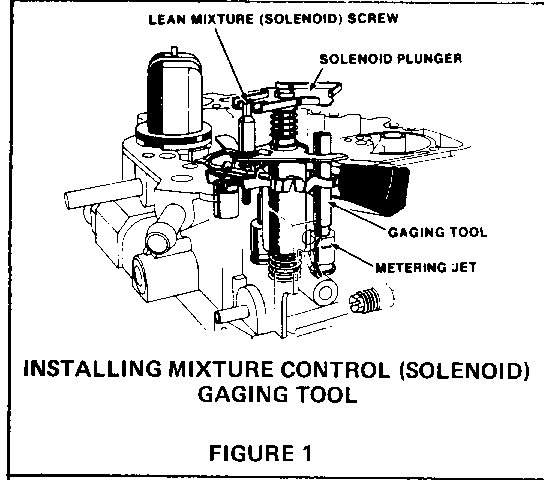
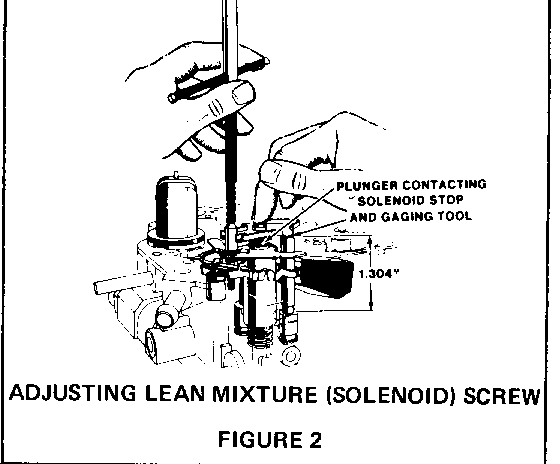
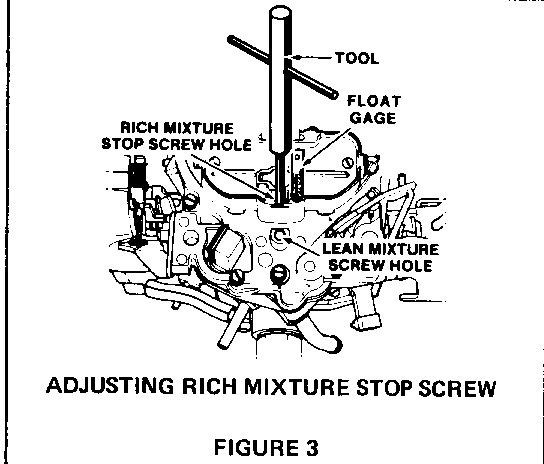
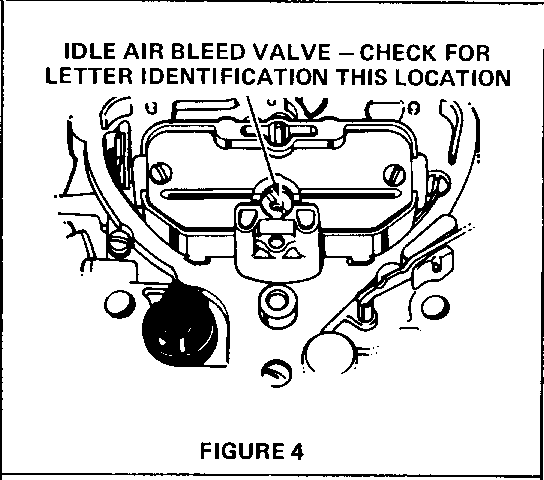
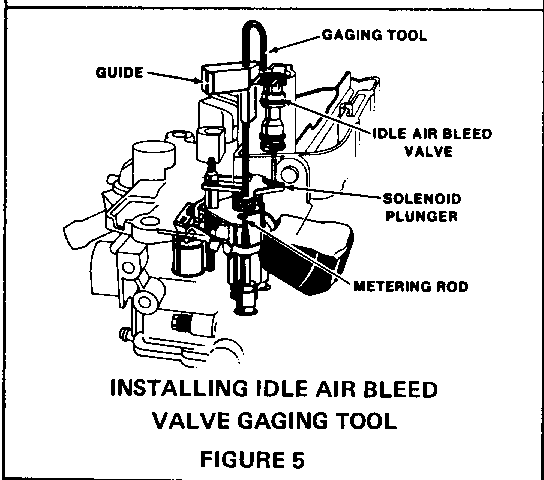
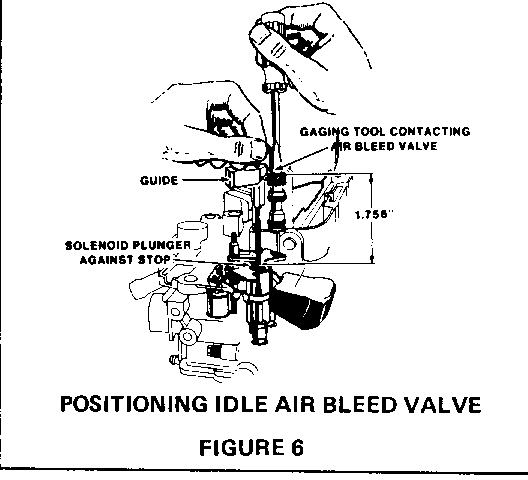
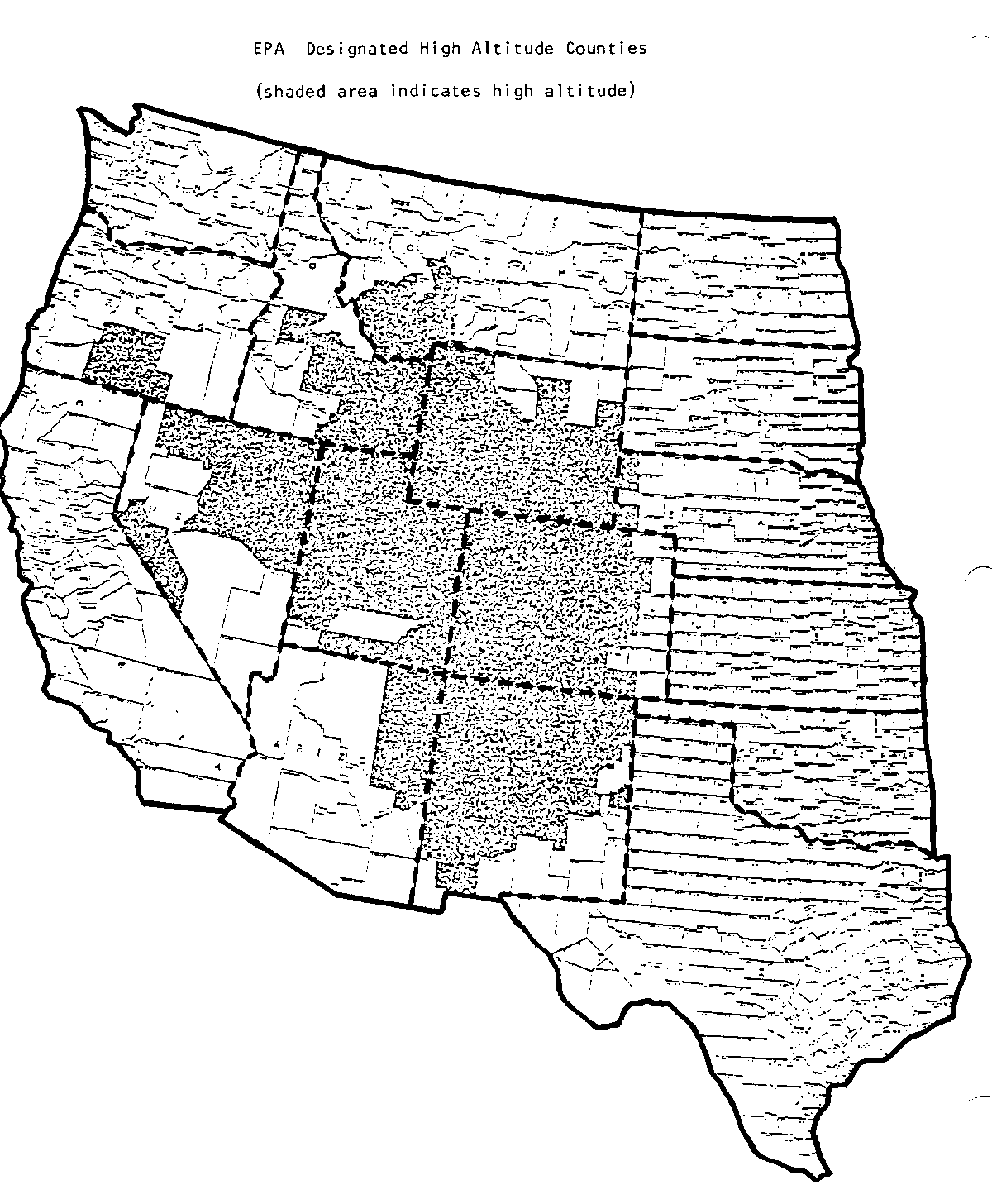
General Motors bulletins are intended for use by professional technicians, not a "do-it-yourselfer". They are written to inform those technicians of conditions that may occur on some vehicles, or to provide information that could assist in the proper service of a vehicle. Properly trained technicians have the equipment, tools, safety instructions and know-how to do a job properly and safely. If a condition is described, do not assume that the bulletin applies to your vehicle, or that your vehicle will have that condition. See a General Motors dealer servicing your brand of General Motors vehicle for information on whether your vehicle may benefit from the information.
